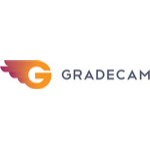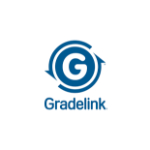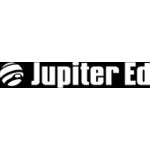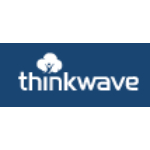TechnologyCounter provides genuine, unbiased real user reviews to help buyers make informed decisions. We may earn a referral fee when you purchase through our links, at no extra cost to you.
List of Best Gradebook Software
Showing 1 - 6 of 6 productsGradeCam is a software that streamlines the assessment process for teachers. With its user-friendly interface technology, GradeCam helps educators save time, simplify grading, and gain valuable insights into student progress. Say goodbye to manual gr...Read GradeCam Reviews
Gradekeeper is a tool for managing grades and students progress. With its user-friendly interface and powerful features, Gradekeeper simplifies the grading process for teachers while providing valuable insights for students and parents. Say goodbye t...Read Gradekeeper Reviews
Gradelink is a solution for efficient school management. Designed to simplify the complexities of academic administration, Gradelink offers customizable features to meet the specific needs of your school. Say goodbye to endless paperwork and hello to...Read Gradelink Reviews
Jupiter is a and awe-inspiring planet of our solar system with mesmerizing stripes of swirling clouds and unfathomable storms. Third in line from the sun and the largest planet, Jupiter is a breathtaking sight in the night sky. Lets explore this gas...Read Jupiter Reviews
eTeacher is a online education platform that connects students with top-tier teachers from around the world. Whether youre looking to learn a new language, improve your skills in a specific subject, or prepare for an important exam, eTeacher offers p...Read eTeacher Reviews
ThinkWave is a and innovative software that simplifies school management by streamlining administrative tasks and boosting communication between teachers, students, and parents. With its user-friendly interface features, ThinkWave helps schools save...Read ThinkWave Reviews
- What Is Gradebook Software?
- Top Reasons Why Businesses Need Gradebook Software?
- What Are the Top Key Features of Gradebook Software?
- What Are the Top Benefits of Gradebook Software?
- What Are the Steps to Choose the Right Gradebook Software?
- What Are the Types of Gradebook Software for Different Industries?
- What Are the Technology Trends for Best Gradebook Software?
- What Are the Deployment Options for Gradebook Software?
What Is Gradebook Software?
Gradebook software is a computer application designed to facilitate the efficient and accurate management of student grades by educators and school administrators. This software enables the real-time monitoring and recording of student performance data.
This functionality is achieved by providing users with the ability to input student grades into a secure online database, typically through a web-based application. The primary objective of the best gradebook software is to enhance precision in evaluating student performance, differentiate between various forms of evaluation, and facilitate the dissemination of information.
Additionally, it has the capability to offer automation and real-time data regarding student performance, so facilitating the monitoring of progress and identification of potential areas of concern. Gradebook software is a valuable tool in the educational setting as it facilitates the establishment and assessment of standards and equity among students.
Moreover, it enables administrators to effectively track and analyze student performance over a period of time. Furthermore, the program facilitates the analysis of overall performance by educators and enables seamless communication with fellow staff members and parents.
Through the utilization of software, educators are able to effectively and efficiently relay significant educational milestones and accolades to the families of students in a prompt and precise manner.
In general, top gradebook software serves as a crucial tool that helps alleviate the administrative and instructional challenges associated with overseeing student progress for educational administrators and instructors.
Top Reasons Why Businesses Need Gradebook Software?
1. Gradebook software enables educators to efficiently and precisely compute student grades.
2. Gradebook software is capable of efficiently storing substantial quantities of data, hence facilitating the monitoring of student achievement.
3. Gradebook software offers a streamlined and systematic approach for the storage of student records.
4. Top gradebook software provides educators with the capability to effectively track and assess students' academic progress and performance within a given course.
5. Gradebook software provides educators with the convenient capability to export grades to many systems, including the student information system (SIS).
6. Gradebook software has the capacity to decrease the need for manual administrative duties, so allowing teachers to allocate more time towards their instructional responsibilities.
7. Gradebook software offers a diverse range of reports and exports, so granting instructors enhanced visibility into the classroom setting.
8. Gradebook software provides instructors with the ability to efficiently manage and modify classroom seating arrangements or student lists.
9. Gradebook software enables educators to conveniently monitor attendance for the entire class.
10. Gradebook software facilitates the alignment of student assignments with state and district standards and results.
11. Gradebook software facilitates the monitoring and optimization of educational activities, including collaborative tasks and individual assignments, by instructors.
12. Gradebook software provides instructors with the ability to customize training based on individual student needs, thus facilitating informed decision-making regarding student progress and development.
13. Online gradebook software assists educators in effectively preparing for parent-teacher conferences by providing them with a full overview of each student's academic progress.
14. Gradebook software facilitates collaboration among educators by providing them with shared access to identical data.
15. Gradebook software facilitates the expeditious and effective communication of student grades to parents by teachers.
What Are the Top Key Features of Gradebook Software?
The top key features of online gradebook software include:
1. Automated Grade Calculations: The automated calculation of final grades and individual student performance can be achieved with ease and precision.
2. Data Security: In order to safeguard student data, it is imperative to implement sophisticated security mechanisms that effectively restrict access to sensitive information solely to authorized individuals.
3. Reporting: Produce complete reports using intuitively designed visual representations such as charts, graphs, and data tables, enabling swift evaluation of important performance indicators.
4. Notifications: Utilize electronic communication methods such as email or SMS notifications to disseminate pertinent academic information to both students and parents, including updates on grades, forthcoming assessments, attendance records, and other significant details.
5. Classroom Management: The modules are intuitively designed to facilitate the tracking of attendance management, student progress, exam scores, and discipline cases.
6. Integration: Facilitate smooth integration with external student information systems, such as learning management systems (LMS), student information systems (SIS), and other comparable services.
7. Customization: One can readily modify grading scales, weights, categories, and curriculums to effectively accommodate the specific requirements of various classrooms.
8. Flexible Accessibility: Establishing several user accounts for various stakeholders and enabling unrestricted access at any given time and location.
9. Robust Analytics: This study aims to generate valuable insights and actionable data for the purpose of monitoring student performance and enhancing teaching effectiveness.
10. Multi-Class Support: Efficiently handle many classes inside a single grade book and seamlessly transition between different parts.
What Are the Top Benefits of Gradebook Software?
1. Automation: Gradebook software is designed to automate various tasks involved in grading assignments and monitoring student performance, hence reducing the burden of repetitive work. This practice enhances precision and conserves crucial time for educators.
2. Detailed Reporting: Gradebook software offers comprehensive information on student achievement, which can be utilized to assess the efficiency of educational programs and make informed instructional choices.
3. Efficiency: The utilization of online gradebook software enhances the efficacy of evaluating assignments and monitoring student progress. This facilitates the identification of areas that require improvement, enables the monitoring of progress, and allows for the tracking of trends.
4. Communication: Gradebook software facilitates enhanced communication between educators and learners. Students have the opportunity to receive individualized feedback, while professors can offer frequent updates on their students' development.
5. Security: Gradebook software offers a secure means of storing student data and academic outcomes. This practice guarantees the maintenance of confidentiality and security of student information.
6. Accurate Record Keeping: Gradebook software plays a crucial role in maintaining precise documentation of student performance and outcomes. This approach offers educators a dependable means of monitoring the academic advancement of individual students.
7. Flexibility: The top gradebook software exhibits adaptability and may effectively facilitate the management of many assessment types. Furthermore, it has the potential to be modified to accommodate the specific requirements of a certain educational setting, whether it be a classroom or an entire school.
8. Advanced Analytics: Gradebook software can offer comprehensive and in-depth analysis of student performance. This enables educators to discern areas that require enhancement and facilitate informed teaching choices.
What Are the Steps to Choose the Right Gradebook Software?
1. Research current options: To identify the most suitable online gradebook software for one's requirements, it is advisable to commence by conducting thorough research on the presently accessible alternatives.
When contemplating the selection of features and benefits, it is imperative to carefully evaluate both present and future requirements.
2. Consider how easy the software is to use: It is imperative to carefully choose gradebook software that possesses user-friendly features that foster engagement among teachers and students alike.
3. Make sure software is compatible with your devices: It is vital to ensure that the online gradebook software exhibits compatibility with the devices being utilized or anticipated for future use.
4. Ensure the grade book software meets school requirements: It is imperative to verify that the best grade book software chosen aligns with the specific needs of your educational institution.
5. Compare options and choose a winner: After careful evaluation of many criteria, it is advisable to do a comparative analysis of available possibilities and afterward choose the grade book software that aligns most effectively with your specific requirements.
What Are the Types of Gradebook Software for Different Industries?
Top gradebook software can be classified according to the industry it is made for. Different industries will have different needs when it comes to gradebook software, which can be met by the following types:
1. Academic Gradebook Software: This particular program is specifically tailored for implementation within universities, colleges, and other educational establishments. Its primary function is to facilitate the monitoring of various academic aspects such as grades, attendance, assignments, tests, and other related activities by educators.
Additionally, this feature facilitates the generation of various reports, thereby offering an efficient means of documenting student advancement.
2. Corporate Gradebook Software: The gradebook software in question has been specifically developed for utilization by enterprises and organizations, enabling employers to effectively monitor and assess employee performance and advancement.
Additionally, this system facilitates the generation of reports that are contingent upon several productivity-related parameters, including but not limited to attendance, task performance, and review feedback.
3. Government Gradebook Software: This particular gradebook software is specifically tailored for government agencies, enabling them to effectively monitor the performance of their employees or contractors, while also maintaining comprehensive records of the diverse projects they are engaged in.
4. Laboratory Gradebook Software: This particular software is specifically tailored for utilization in laboratory and research settings, offering a streamlined approach to effectively manage and monitor outcomes, experiments, and data.
Additionally, this program facilitates the generation of reports utilizing the data that has been gathered.
5. K-12 Gradebook Software: The top gradebook software in question has been specifically tailored to cater to the needs of elementary, middle, and high schools, offering teachers more capabilities for efficient management of classes and pupils.
Additionally, this software aids in the production of reports and graphs, thereby providing educators with a more comprehensive understanding of students' academic advancement.
What Are the Technology Trends for Best Gradebook Software?
The prevailing technology advancements in the realm of the best gradebook software are evident in three primary domains: cloud accessibility, integration with supplementary classroom management systems, and user interfaces that prioritize ease of use.
Cloud-based access has become the prevailing standard for gradebook software, facilitating convenient access to multiple grade books across various devices with internet connectivity. This offers instructors worldwide the benefits of ease and security. The significance of integrating with other systems in educational institutions is growing, as various programs are progressively establishing communication channels.
Numerous online gradebook software applications are currently being integrated with student information systems, learning management systems, and classroom scheduling tools in order to guarantee precision in the exchange of data. In recent times, there has been a notable advancement in the design of user interfaces for gradebook software, resulting in enhanced intuitiveness.
This facilitates instructors in efficiently navigating gradebook software and promptly familiarizing themselves with its functionalities, including the ability to give and evaluate assessments, administer attendance records, and monitor student advancement.
The aforementioned technological advancements collectively led to the development of advanced gradebook software, which enables educators to efficiently and precisely administer their classrooms.
What Are the Deployment Options for Gradebook Software?
Various deployment options are available for the best gradebook software, including web-based installation, self-hosted software, and cloud-based software.
1. Web-based installation refers to the process of accessing the gradebook directly through a web browser or mobile device. This method often provides smooth connection with other systems.
Self-hosted software necessitates users to implement the gradebook system on their pre-existing PCs or servers, a process that may be accomplished either manually or with the assistance of an information technology specialist.
2. Cloud-based software is commonly hosted by a third-party entity and allows for remote access from any internet-connected device.
The gradebook system offers customers a significant level of flexibility and scalability in terms of the locations and timeframes in which they can access it.






